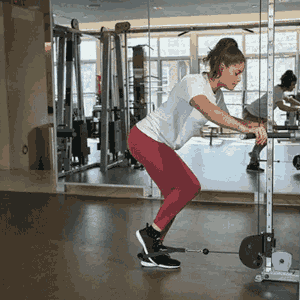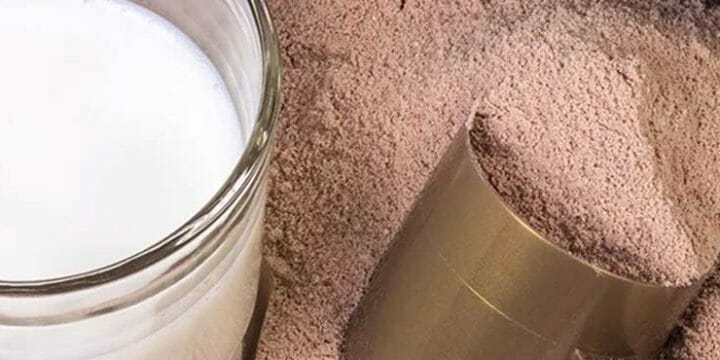In lower-body workouts, the focus often lands on the quads, hamstrings, and calves.
But for really targeting those glutes, nothing beats cable glute kickbacks. As a health and performance coach with a background in sport and exercise science, I can vouch for their effectiveness.
However, they're often done wrong, which can be counterproductive. It's crucial to nail the setup and execution, and I'm here to guide you through it.
Quick Summary
How Do You Set Up Cable Kickbacks?

To set up cable kickbacks effectively, start by attaching the ankle cuff to your right leg, face the cable machine, and maintain proper form throughout your workout.
Step #1: Get Ready
- Face the cable machine.
- Attach the ankle cuff to your right leg, linked to the low pulley.
- Stand with knees slightly bent, feet shoulder-width apart.
- Start with lighter weights, then increase for fewer reps.
Step #2: Smooth Moves
- Kick your right leg back, keeping your upper body facing the machine.
- Keep the leg straight, aiming for hip level.
- Lean forward slightly for balance.
- At the top, squeeze the glutes and hold for a second.
Step #3: Go the Distance
- A good range of motion is essential.
- Based on my experience, regular stretching is crucial. It not only helps lift your leg higher but also improves overall flexibility, a key aspect I focus on with my clients.
Step #4: Don't Play Favorites
- In my practice, I stress the importance of balanced training for symmetrical muscle development and injury prevention.
- Switch the cuff to the other leg promptly.
- Keep the breaks short to maintain momentum and build strength.
Key Takeaway: It's not just about the reps; execution is crucial for effective results. Stay steady and strong for well-shaped glutes.
Related Articles:

4 Common Cable Kickback Mistakes

- Standing Too Upright. Don't stand straight up. You'll miss the full motion range and stress your lower back. Instead, lean forward a bit – it eases back pressure and lets you lift higher.
- Relying on Momentum. Avoid using momentum to lift. This forward sway before the leg lift lessens muscle work. Keep it controlled.
- Focusing on Weight, Not Form. Slow and steady wins the race. A heavier weight isn't always better. Focus on form and slower movements for a more effective workout. Don't just chase big numbers in your workout log.
- Prioritizing Speed Over Technique. Speed isn't the goal; tension is. Lift your leg in a 2-second count, hold for 1-2 seconds, then lower in 3. This method, backed by the Journal of Physiology, enhances glute strength [1].
Remember, slow and controlled is the way to go!
Cable Kickback Variations And Reps

To keep workouts dynamic, which I always advocate for, you can mix up your routine with different variations and rep counts.
Mixing Up Your Leg Workouts
- Cable Glute Kickback with Abduction. Shake things up by standing sideways to the cable machine. Attach the cuff to the far leg and raise it sideways, hitting those thigh and smaller glute muscles.
- Other Variations. Try single-leg, high pulse, and lateral kickbacks for a well-rounded glute workout, enhancing balance and toning.
- Without Cable Machine. Opt for hip bridges, step-ups, donkey kicks, or Bulgarian split squats. They're great alternatives. Or, hook a resistance band to a door for a DIY cable kickback. It's trickier to build up the tension, but way better than just stair-climbing.
“Cable kickbacks offer a unique way to target the muscles within the posterior that won’t necessarily be targeted in our usual routines. They predominantly target the glutes, providing an engaging and challenging workout for the gluteus maximus, gluteus medius, and gluteus minimus, all of which are posterior muscles in the upper leg.”
- Chris Allsobrook, Personal Trainer at Origym
Choosing The Right Reps
- Muscle Building vs. Toning: Aim for 8–10 reps with a struggle on the last two for muscle growth. For toning and shedding flab, 12–15 reps with lighter weights do the trick, as shown in a Journal of Applied Physiology study [2].
- Core Engagement: These exercises also work other muscles, boosting core strength.
- Recovery Tip: Consider a post-workout supplement we recommend for quicker muscle recovery and strength building.
FAQs
Are Cable Glute Kickbacks Bad for Your Back?
No, cable glute kickbacks aren't bad for your back as long as you perform them properly. Bad posture and a lower body misalignment can increase the pressure on your lower spine and cause some significant strain injuries.
Should You Do Cable Glute Kickbacks Every Day?
No, you shouldn’t do cable glute kickbacks every day. You can have a designated leg and glute day once or twice a week, but anything more than that will limit the benefits you can get.
References:
- https://www.ncbi.nlm.nih.gov/pmc/articles/PMC3285070/
- https://www.ncbi.nlm.nih.gov/pmc/articles/PMC3544497/
About The Author
You May Also Like






